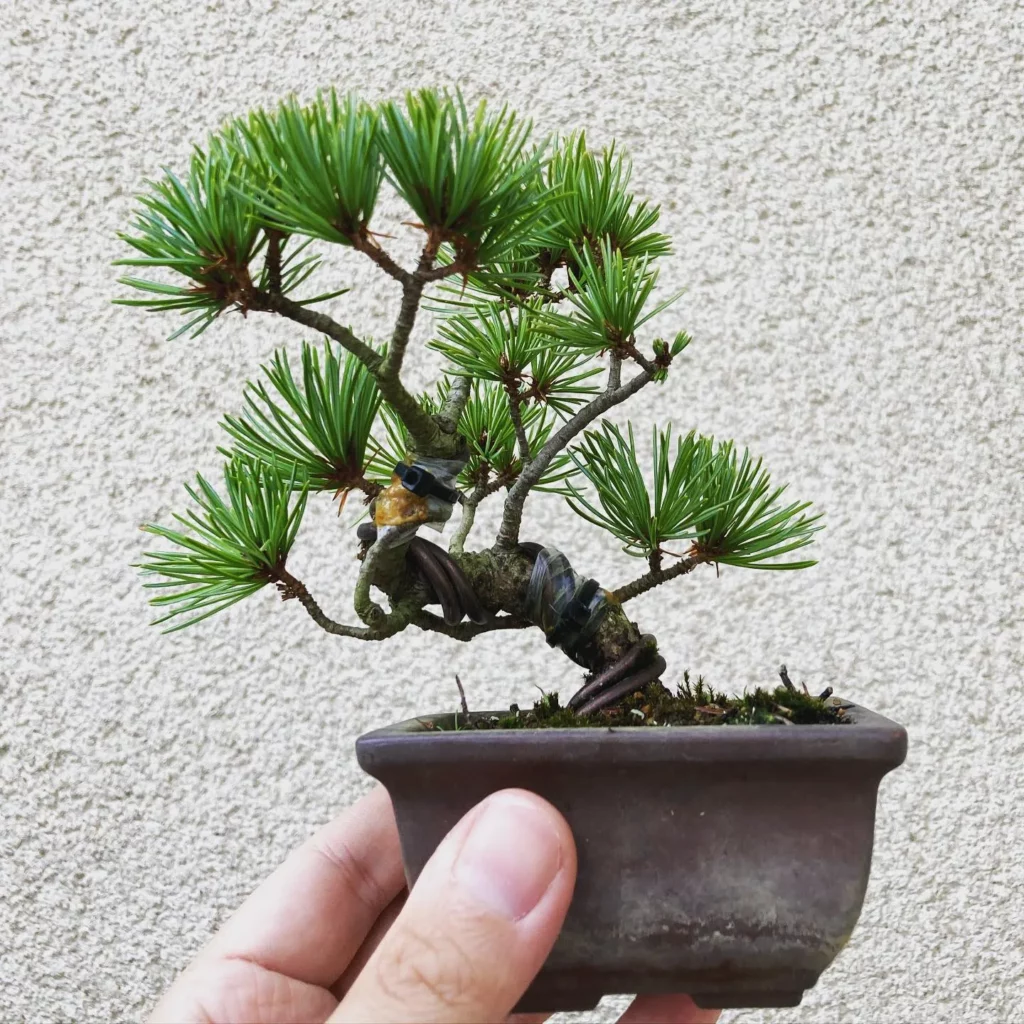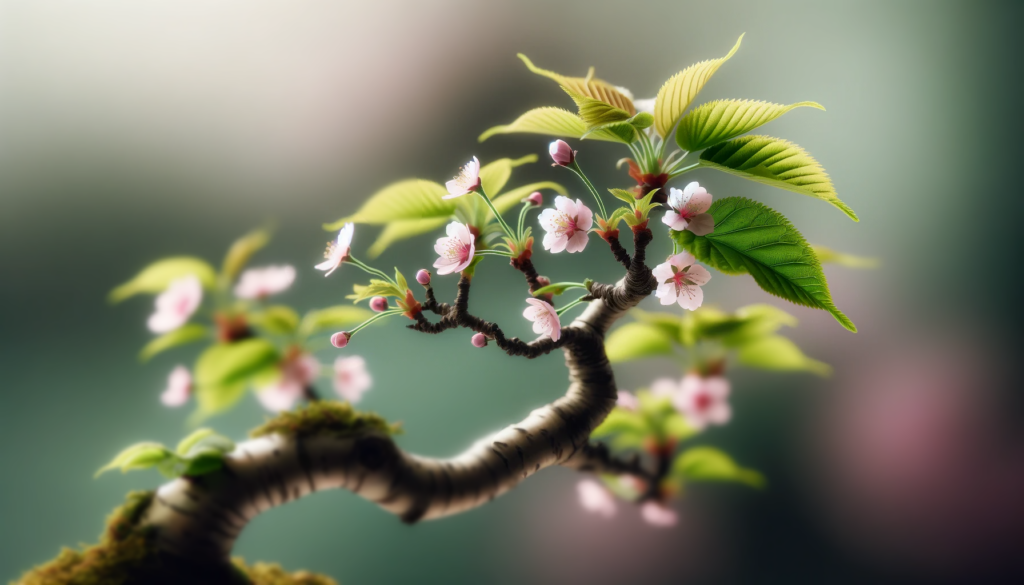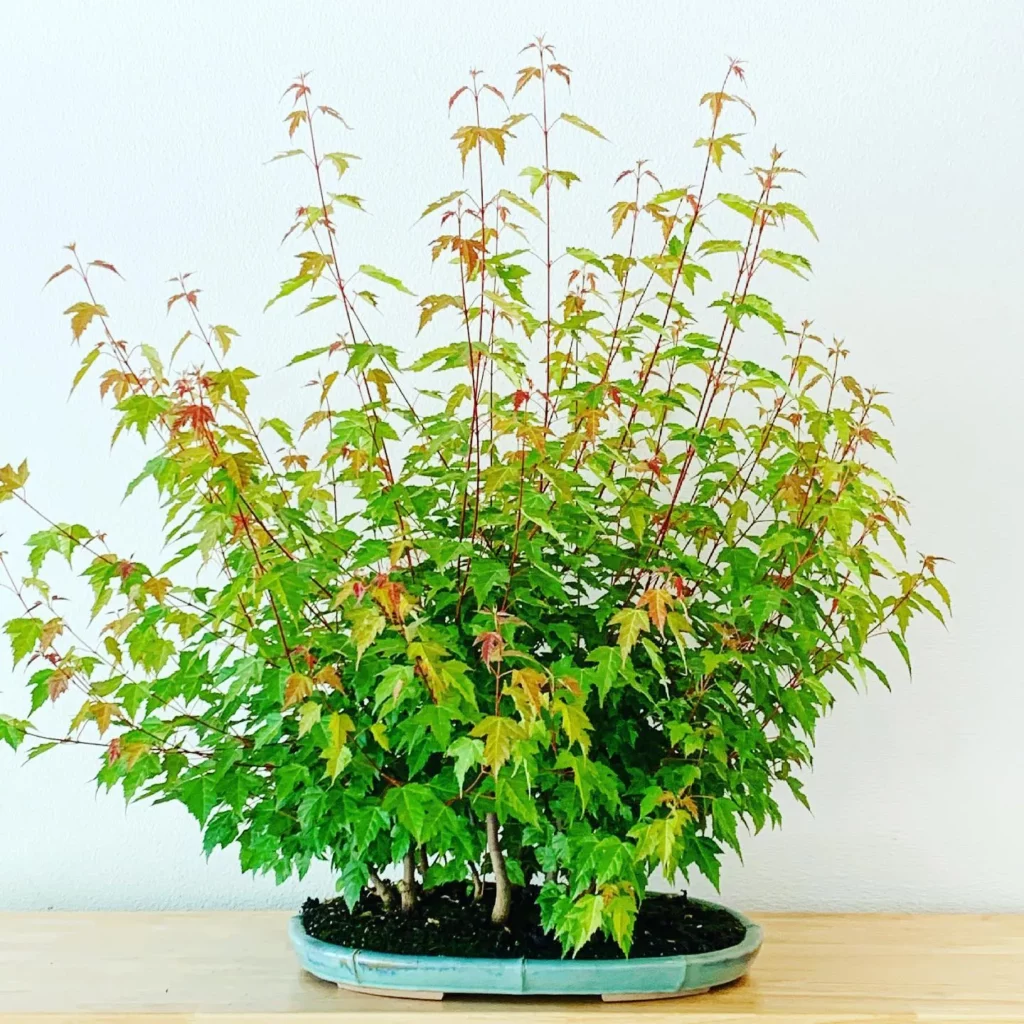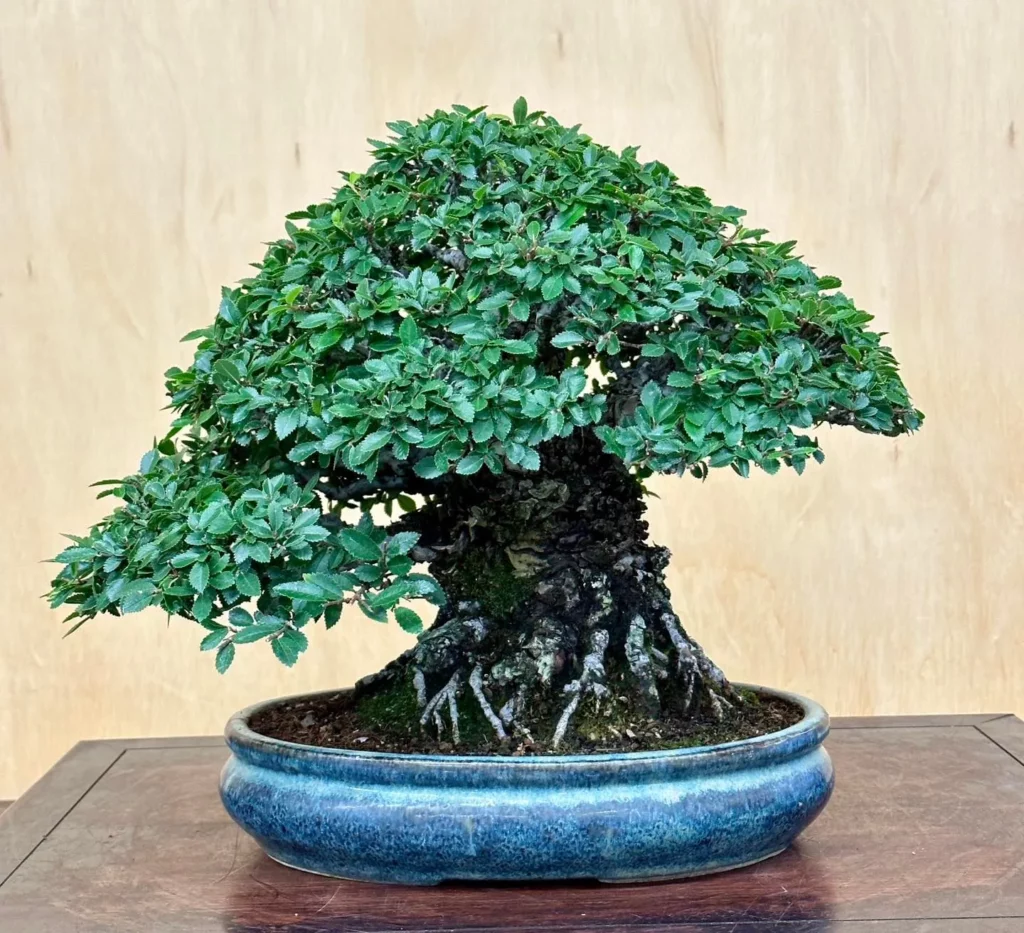Winter can be a challenging time for bonsai trees, especially those planted in shallow containers. Unlike trees in natural settings, bonsai trees require extra care to survive freezing temperatures. In this article, we will provide you with essential tips for winter care of bonsai trees, ensuring their health and protection from the cold.
Preparing Bonsai Trees for Winter

Before winter arrives, it is important to take the necessary steps to prepare your bonsai trees for the upcoming cold weather. By properly preparing your trees, you can ensure their health and protect them from the harsh winter conditions.
No products found.
- Allowing Natural Dormancy: It is crucial for temperate bonsai trees to go through the natural process of dormancy. This can be achieved by gradually exposing them to fall temperatures. This period of dormancy is essential for the overall well-being of bonsai trees.
- Timing is Key: In colder areas, it is recommended to wait for the first frost before putting your trees in winter storage or providing protection. This ensures that the trees have acclimated to the changing weather conditions and are ready for the winter months.
- Leaf Removal: Before winter sets in, it is important to remove the leaves from deciduous trees. This helps prevent fungal diseases and allows the trees to conserve energy during the dormant period. Additionally, remove brown needles from conifers to promote healthy growth in the spring.
Providing Shelter for Bonsai Trees

Bonsai trees require shelter from harsh winter conditions, particularly strong winds and temperature fluctuations. Protecting your bonsai trees during winter is crucial to ensure their health and survival.
In cold areas, the best option is to keep your bonsai trees in a greenhouse or a cold frame. A greenhouse provides a controlled environment, shielding the trees from extreme temperatures and wind. A cold frame is a smaller structure that offers similar protection while reducing temperature fluctuations. Both options help to maintain a more stable climate for your bonsai trees and prevent freezing temperatures at night.
If you don’t have access to a greenhouse or a cold frame, you can still protect your bonsai trees from winter elements. One method is to place styrofoam covers around the bonsai pots to insulate the roots. This helps to prevent freezing and protects the roots from temperature changes.
Another option is to plant the bonsai directly in the garden, covering the roots with soil. This provides natural insulation and minimizes temperature fluctuations. When choosing a spot in the garden, ensure it is sheltered from excessive wind, which can dry out the tree and cause damage.
In milder climates where temperatures may drop to around 25 °F at night, a cold frame may not be necessary. However, it is still important to protect the bonsai from strong winds and sudden temperature drops. Creating a windbreak using a fence or shrubs can help shield the trees from damaging gusts.
Watering and Pest Control

During the winter months, bonsai trees enter a state of dormancy, and their water needs differ from the growing season. It is important to adjust your watering routine to ensure the health of your trees.
When watering bonsai in winter, it is crucial to monitor the moisture levels of the soil. Only water your trees when the soil has thoroughly dried out to prevent overwatering. Overwatering can lead to root rot and other moisture-related issues. Remember, dormant bonsai trees require much less water compared to their active growing season.
Regularly checking your bonsai trees for pests and diseases is also essential during winter. Just because bonsai trees are dormant does not make them immune to these issues. In fact, the dormant period can make them more vulnerable. Inspect the tree’s foliage, branches, and trunk for any signs of infestation or infection, such as webs, discoloration, or unusual growths.
Pest Control Tips for Bonsai in Winter:
- Remove any visible pests manually, using tweezers or a soft brush, if possible.
- If pests are present, consider using an appropriate insecticidal soap or horticultural oil. Follow the instructions provided by the manufacturer.
- Prevent the spread of pests by isolating affected trees from healthy ones.
- Regularly clean the bonsai’s pot and surrounding area to eliminate hiding places for pests.
Choosing the Right Storage Option

When it comes to winter storage for your bonsai trees, choosing the right option is crucial for their protection and well-being. The optimal conditions for winter storage ensure that your trees remain healthy during the cold months. Depending on your specific climate and the type of bonsai trees you have, different storage options may be suitable.
No products found.
Greenhouses and Cold Frames
If you have access to a greenhouse or a cold frame, these are ideal options for winter storage. Greenhouses provide shelter from harsh weather conditions and maintain consistent temperatures, creating a controlled environment that promotes the well-being of your trees. Cold frames are smaller versions of greenhouses that offer similar benefits.
Unheated Outbuildings and Enclosed Spaces
If greenhouses or cold frames are not available, you can use unheated outbuildings or enclosed spaces like garages, sheds, or patios. These spaces provide protection from extreme weather conditions and offer a degree of insulation for your bonsai trees.
Important Considerations
Whichever storage option you choose, there are important factors to consider. Firstly, make sure the storage option protects your trees from harsh weather conditions such as freezing temperatures, excessive wind, and heavy snow. Secondly, maintain proper temperature and humidity levels within the storage space to ensure the health of your trees. Lastly, provide adequate insulation to prevent temperature fluctuations that can harm your bonsai.
Winter Care for Tropical Bonsai
Tropical bonsai trees require special care in winter to ensure their health and well-being, especially if they are grown outdoors during the summer months. Below are essential tips to help you care for your tropical bonsai during the winter season.
Bringing Tropical Bonsai Indoors
As temperatures drop, it is crucial to bring your tropical bonsai indoors before they are exposed to temperatures below 50 °F. Choose a bright, warm spot in your home where the trees can receive sufficient light without being placed near heating vents, which can dry out the trees. This will help maintain the optimal conditions for their growth and prevent any damage caused by cold weather.
Watering Considerations
Proper watering is essential for the health of your tropical bonsai during winter. Water the trees when the soil begins to dry out, but be cautious not to overwater them. Check the moisture level of the soil regularly to ensure that it remains slightly damp, avoiding both drought and waterlogged conditions. Adjust your watering frequency as needed based on the specific requirements of your bonsai trees.
Alternative Indoor Spaces
If you have limited indoor space for your tropical bonsai, consider utilizing heated patios, sunrooms, or greenhouses as suitable alternatives for overwintering. These spaces can provide the necessary warmth and light that tropical bonsai trees need to thrive during the winter season. Ensure that the temperature and humidity levels are adequately regulated to maintain an optimal environment for your bonsai trees.
Additional Care Tips
While your tropical bonsai is indoors, keep an eye out for any signs of pests or diseases. Regularly inspect the trees’ leaves, branches, and soil for any potential issues and take appropriate action if necessary. Additionally, avoid placing your bonsai trees near drafty windows or cold areas of your home to prevent exposure to chilling winds.
Understanding Bonsai Cold Hardiness
The cold hardiness of bonsai trees varies depending on the species and their natural climate. It is important to understand the cold hardiness of your specific bonsai trees to determine the level of protection they need in winter.
Some bonsai species are more tolerant of cold temperatures than others. Factors such as elevation, precipitation, and season length can also affect the cold hardiness of trees. Therefore, it is recommended to take a conservative approach to winter care and consider local climate conditions.
When determining the cold tolerance of your bonsai trees, it is advisable to research the specific requirements and characteristics of each species. Some trees, like pine or juniper, are generally cold-hardy and can withstand freezing temperatures. On the other hand, tropical bonsai species, such as ficus or jade, are less tolerant of cold and require more protection during winter.
To help you assess the cold hardiness of your bonsai trees, here are some factors to consider:
Natural Habitat:
- Research the native climate and region where your bonsai tree species originated from.
- Consider the temperature range, weather patterns, and typical winter conditions of that area.
- Compare these conditions with the climate of your own location to determine if adjustments need to be made for winter care.
Species-Specific Information:
- Consult reliable bonsai resources or experts for information on the cold hardiness of specific bonsai species.
- Learn about the typical temperature limits that certain trees can tolerate without experiencing significant damage or stress.
Observation and Experience:
- Observe how your bonsai trees respond to cold weather in previous winters.
- Take note of any signs of damage or stress, such as wilting, discoloration, or leaf drop.
- Use this information to assess the level of protection required for your trees in future winters.
Key Factors in Winter Storage
When it comes to storing your bonsai trees during the winter months, there are several key factors that you need to consider in order to ensure their health and well-being. By paying attention to these factors, you can protect your bonsai trees from potential damage and help them thrive when spring arrives.
Importance of Wind Protection
One of the most crucial factors in winter storage is providing wind protection for your bonsai trees. Strong winds can quickly dehydrate the trees, which can be detrimental to their health. To prevent drying out, it is recommended to place your bonsai trees in a location that is shielded from strong winds. This can be accomplished by positioning them against a wall or placing them in a sheltered area, such as a greenhouse or cold frame.
Importance of Temperature Stability
Another important factor to consider is maintaining stable temperatures within the recommended range for dormancy. Fluctuating temperatures can disrupt the trees’ natural dormancy process and potentially cause damage. To ensure temperature stability, it is essential to choose a storage location that provides consistent temperatures and protects the bonsai trees from extreme cold or heat. Greenhouses or cold frames are particularly effective in maintaining stable temperatures and protecting against sudden temperature drops.
Avoiding Frequent Freeze-Thaw Cycles
Frequent freeze-thaw cycles can also pose a risk to the health of your bonsai trees. The constant fluctuation between freezing and thawing can cause stress to the trees and damage their delicate roots. To avoid this, it is important to choose a storage location that minimizes the exposure of the trees to extreme temperature changes. A location that provides insulation and protects against temperature fluctuations will help prevent damage from freeze-thaw cycles.
Providing Adequate Insulation
Adequate insulation is another key factor to consider in winter storage. Insulation helps protect the bonsai trees from extreme cold temperatures and helps maintain a stable environment. Using insulation materials such as frost blankets, straw, or even layers of mulch can provide an extra layer of protection for your bonsai trees. Insulating the pots by wrapping them in burlap or placing them in a larger container filled with insulating material can also help keep the roots at a stable temperature.
Various Winter Storage Strategies
When it comes to winter storage of your bonsai trees, there are several strategies you can consider based on your available resources and specific conditions. Each strategy has its own advantages and considerations, so you can choose the one that best suits your needs and provides adequate protection for your bonsai trees.
1. Placing Trees Under Benches
One option for winter storage is to place your bonsai trees under benches. This helps protect them from freezing temperatures and strong winds. The bench provides a barrier between the trees and the cold ground, offering insulation and preventing the roots from getting too cold.
2. Burying Trees in the Garden
If you have a garden with suitable soil conditions, you can consider burying your bonsai trees for winter storage. Dig a trench in a protected area of your garden and place your trees inside, making sure the pots are completely covered with soil. This method helps maintain stable temperatures and protects the roots from freezing.
3. Using Mulch Beds
Mulch beds are another effective option for winter storage. Surround the pots of your bonsai trees with a layer of mulch, such as straw or wood chips. This provides insulation, helps regulate soil temperature, and prevents rapid temperature fluctuations.
4. Storing in Unheated Garages or Sheds
If you have an unheated garage or shed, it can serve as a suitable storage space for your bonsai trees during winter. Make sure the area is well-ventilated and protected from extreme temperature changes. Place your trees near a window to maximize natural light exposure.
5. Building Cold Frames
Cold frames are structures designed to provide shelter and maintain consistent temperatures for plants during winter. Building a cold frame for your bonsai trees can offer excellent protection. Use transparent materials such as glass or clear plastic to allow sunlight in while keeping the cold out. Make sure to monitor temperature and ventilation inside the cold frame.
Spring Care and Transitioning Out of Winter Storage
As winter comes to an end, it’s time to prepare your bonsai trees for the transition out of winter storage and into the growing season. Follow these steps to ensure their successful transition and promote healthy growth throughout the spring.
- Remove from storage: When the weather is consistently above freezing, take your bonsai trees out of their winter storage. This is typically around early spring when the risk of frost has passed.
- Check for pests and diseases: Before placing your trees outdoors, inspect them carefully for any signs of pests or diseases. Look for common issues such as aphids, spider mites, or fungal infections. If any problems are detected, take appropriate measures to address them.
- Gradual acclimation: It’s important to gradually acclimate your bonsai trees to the outdoor conditions. Start by placing them in a sheltered area with partial sunlight, gradually increasing their exposure to full sunlight over a span of several weeks. This will prevent any shock that could occur from sudden exposure to intense sunlight.
- Protect from late frosts: Spring can still bring occasional late frosts, which can damage tender new growth on your bonsai trees. Keep an eye on the weather forecast and take necessary measures to protect your trees during these frost events. This may involve moving them to a more sheltered location or covering them with frost cloth or blankets.
- Proper care: As your bonsai trees transition into the growing season, they will require regular care. This includes watering them thoroughly when the top inch of soil feels dry, fertilizing them with a balanced bonsai fertilizer according to the manufacturer’s instructions, and pruning as needed to maintain their desired shape.
Real-World Experiences and Timetable for Winter Care
When it comes to winter care for your bonsai trees, the experiences and tips from experienced growers can be invaluable. Their practical knowledge can help you navigate the challenges of winter and ensure the health of your trees. Here are some real-world experiences and tips to guide you in your winter care:
1. Greenhouse or Outdoor Protection?
- Experienced growers have different approaches when it comes to protecting bonsai trees in winter.
- Some prefer moving all their trees to greenhouses for maximum protection from cold weather.
- Others choose to leave their trees outdoors, implementing specific protective measures.
2. Timetable for Winter Care
- The timetable for winter care can vary depending on your specific climate and the species of your bonsai trees.
- Generally, it is recommended to move tropical species indoors before the first frost.
- For temperate trees, it’s important to gradually provide more protection as temperatures drop.
- Observing local weather conditions and taking timely actions are crucial for successful winter care.
Conclusion: Ensuring the Health of Your Bonsai Trees in Winter
Winter care is crucial for maintaining the health and vitality of your beloved bonsai trees. By taking the necessary steps to prepare them for the cold season, providing the appropriate shelter, closely monitoring their condition during dormancy, and considering the specific needs of your trees, you can ensure their survival and overall well-being.
One of the key aspects of successful winter care is proper preparation. Allow temperate trees to enter dormancy naturally by exposing them to fall temperatures, and remove leaves from deciduous trees and brown needles from conifers. Understanding your bonsai trees’ specific needs and local climate conditions will help guide you in providing the right care.
Seeking advice from experienced bonsai growers can be invaluable during the winter months. They can share their real-world experiences and offer practical tips based on their knowledge. With the right care and attention, your bonsai trees will thrive, even when faced with the coldest winter weather.
After this check out our other articles on:
FAQ
How should I prepare my bonsai trees for winter?
Before winter arrives, allow temperate trees to go through the natural process of entering dormancy by exposing them to fall temperatures. Remove leaves from deciduous trees and brown needles from conifers before winter.
How can I provide shelter for my bonsai trees during winter?
In cold areas, keep your trees in a greenhouse or cold frame during the winter. Alternatively, you can place styrofoam covers around the pots or plant the bonsai directly in the garden, covering the roots with soil. In milder climates, protect bonsai from strong winds and temperature drops.
How often should I water my bonsai trees in winter?
Bonsai trees require less water during winter. Water them only when the soil dries out, being careful not to overwater.
Should I check my bonsai trees for insects and infections during winter?
Yes, regularly check your bonsai trees for pests and diseases during the winter months. Dormant trees are still susceptible to issues, so prompt monitoring and treatment are important.
What is the best storage option for my bonsai trees during winter?
Greenhouses and cold frames are ideal for providing shelter and maintaining consistent temperatures. If those are not available, unheated outbuildings or enclosed spaces like garages, sheds, or patios can also be used. Choose a storage option that protects your trees from harsh weather conditions and provides proper insulation.
How should I care for tropical bonsai trees in winter?
Bring tropical bonsai indoors before temperatures drop below 50 °F. Place them in a bright, warm spot away from heating vents. Water the trees when the soil begins to dry out, being cautious not to overwater.
How can I determine the cold hardiness of my bonsai trees?
The cold hardiness of bonsai trees varies depending on the species and their natural climate. Factors like elevation, precipitation, and season length can also affect cold hardiness. Consult experienced bonsai growers in your area to understand the specific needs of your trees.
What are the key factors to consider in winter storage for bonsai?
Key factors include wind protection to prevent dehydration, maintaining stable temperatures within the recommended range for dormancy, avoiding freeze-thaw cycles, and providing adequate insulation.
What are the various strategies for winter storage of bonsai trees?
Some options include placing trees under benches, burying them in the garden, using mulch beds, storing them in unheated garages or sheds, or building cold frames. Choose the strategy that suits your needs and provides adequate protection.
How should I transition my bonsai trees out of winter storage in spring?
Remove your trees from storage when the weather is consistently above freezing, check them for any signs of pests or diseases, and gradually acclimate them to outdoor conditions. Protect new growth from late frosts and provide proper care like watering and fertilization.
What can I learn from real-world experiences and the timetable for winter care?
Experienced growers can provide valuable insights and practical tips for winter care. The timetable for winter care can vary depending on climate and tree species. Moving tropical species indoors before the first frost and gradually providing more protection for temperate trees as temperatures drop are generally recommended.
How can I ensure the health of my bonsai trees in winter?
By following the proper steps for winter preparation, providing adequate shelter, and monitoring the trees’ condition during dormancy, you can ensure their survival and overall well-being. Consider the specific needs of your bonsai trees, local climate conditions, and seek advice from experienced growers for successful winter care.




